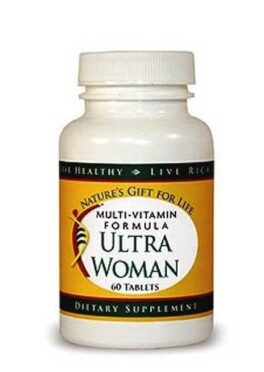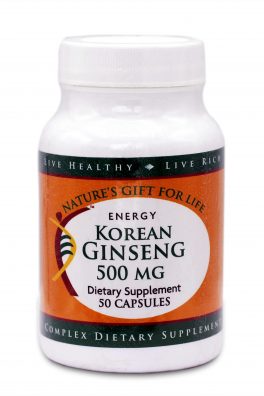Menopause
DOCTORS RECOMMENDED PRODUCTS
-
Menopause
Ultra Woman (Multi-Vitamin)
0 out of 5(0)Benefits of this product for Menopause
- Dynamic product containing appropriate doses of the most important vital nutrients, antioxidants, and minerals needed to keep the female body running smoothly in peri or post menopause
>>>Read More
SKU: n/a34,940CFA - Dynamic product containing appropriate doses of the most important vital nutrients, antioxidants, and minerals needed to keep the female body running smoothly in peri or post menopause
Menopause is marked by the cessation of ovulation and menstruation. The word comes from the Greek mens, meaning monthly, and pausis, meaning cessation. Menopause is the last stage of a gradual biological process in which the ovaries reduce their production of the female sex hormones estrogen and progesterone. This marks the end of a woman’s childbearing years.
This shift generally occurs between the ages of 45 and 56, though it can occur as late as age 60 or as early as age 40 or younger. The average age for menopause is 52 and, like the beginning of menstruation in adolescence, timing varies from person to person. Menopause is a natural process that happens to every woman as she grows older; it is not considered a medical problem in itself. However, due to decreased hormone production, physical changes associated with menopause have been linked to a wide variety of conditions, such as osteoporosis, heart disease, breast cancer, and ovarian cancer
Unlike a woman’s first menstruation, which starts on a single day, the changes leading up to menopause happen over several years. This period is called perimenopause, and most women experience a myriad of symptoms, some of which may be unpredictable and disturbing if the woman doesn’t realize they are related to menopause.
The clearest signs of the start of menopause are irregular periods (when periods come closer together or further apart) and when blood flow becomes lighter or heavier. Other signs may include: unexplained weight gain (particularly in the stomach area); hot flashes; headaches; heart palpitations; poor concentration; forgetfulness; insomnia and night sweats; vaginal dryness and itching; irritation or pain during sexual intercourse (dyspareunia); joint pain; fatigue; bowel upset; dry eyes; itchy skin; depression; hair loss; migraines; wrinkles; worsening of adult acne; loss of libido and urinary tract infections.
Each woman experiences different symptoms and to varying degrees. Most of the time, these symptoms will lessen or go away after a woman has finished the process of menopause, which is considered complete when a woman has not menstruated for an entire year. Natural menopause is the result of the gradual reduction in the production of estrogen and progesterone in the ovaries. Smaller amounts of these hormones are also secreted by the adrenal glands. “Induced”, “sudden”, or “surgical” menopause happens when a woman goes through an immediate and premature menopause.
This occurs when her ovaries no longer produce the hormones estrogen, progesterone, and testosterone This may occur if both ovaries are removed surgically for medical reasons. This may be done at the time of a hysterectomy (removal of the uterus).
Menopause can also be caused by ovarian failure from cancer therapy (chemotherapy or radiotherapy) and ovarian malfunction of unknown origin. Women going through induced menopause have more severe and abrupt onset of menopausal symptoms. Risk factors that may hasten the onset of menopausal symptoms include: smoking, premature ovarian failure, hypothyroidism, and insufficient production of hormones by the adrenal glands.
Progesterone’s primary functions include: acting as a precursor to estrogen and testosterone; maintaining uterine lining and aiding in gestation; protecting against fibrocystic breasts and endometrial and breast cancer; acting as a natural diuretic; helping to metabolize fat for energy; acting as a natural antidepressant; aiding thyroid hormone action; normalizing blood clotting; promoting sex drive; normalizing blood sugar, zinc, and copper levels; restoring proper cell oxygen levels; building bone and helping to protect against osteoporosis.
Estrogen is essential for the reproductive process and influences menstrual cycles, pregnancy, mood, and the aging process. Living without the protective effects of estrogen increases a woman’s risk for developing serious medical conditions, including osteoporosis and cardiovascular disease. There are a variety of treatments available to help ease the symptoms and reduce health risks associated with menopause.
There is a growing interest in natural approaches to minimizing the effects of menopause, and many women find herbal solutions meet their needs remarkably well.
Healthy Things You Can Do
• Consume a diet rich in a variety of vegetables and fruits especially those that are deeply colored (dark leafy greens, spinach, carrots, peaches, berries) as they have the highest micronutrient content.
• Choose whole-grain (whole wheat, oats/ oatmeal, rye, barley, brown rice, buckwheat, bulgur, millet, and quinoa) and high-fiber foods especially legumes (beans, peas).
• Eat fish, especially oily fish, at least twice a week (about 8 ounces/week) for essential fatty acids.
• Cut down on beverages and foods containing added sugars like corn syrups, sucrose, glucose, fructose, maltose, dextrose, concentrated fruit juice, and honey. Try a natural healthy sugar substitute like stevia.
• Eat a healthy diet rich in raw foods and phytoestrogens. Eat soy foods (tofu, soy milk, roasted soy nuts, or tempeh). The isoflavones in soy foods help balance hormone levels and have some estrogenic activity. Red clover, most nuts and seeds, papaya, peas, beans, and linseeds are also rich in phytoestrogens.
• Eat smaller-sized meals; large meals can increase your body temperature. • Increase intake of selenium rich foods (brazil nuts, oysters, albacore tuna, clams, sardines, pork tenderloin, all salt-water fish, wholewheat pasta, chicken, tofu, and pinto beans), calcium-rich foods (seaweed, low-fat yogurt, almonds, sesame seeds), vitamin B12-rich foods (clams, oysters, shrimp, herring, crab, trout, salmon, tuna in water, lean beef and lamb, nonfat milk, and low-fat cottage cheese) and vitamin D-rich foods (oily fish, especially sardines as well as salmon, fresh tuna, and mackerel).
• Get regular, moderate exercise. Try to get at least 30 minutes, and preferably 60 – 90 minutes, of daily exercise. Do low-impact, weight bearing exercise, such as walking, dancing, or aerobics, for 30 minutes four to five times a week, to promote heart health, control weight, promote relaxation, and help prevent osteoporosis. Yoga also helps for menopausal symptoms and stress.
• Quit smoking. Smoking is linked to a decline in estrogen levels along with premature menopause and a higher risk of developing heart disease and osteoporosis.
• Avoid hot flash triggers like spicy foods, hot foods and beverages, coffee, tea, alcohol, sugar, dairy products, processed meat products, fried foods and chocolate, colas and other sources of caffeine which may promote hot flashes. • Dress in layers so that clothes can be removed when a hot flash occurs.
• For vaginal dryness, use an appropriate aloe gel (such as NG4L Aloe Antiseptic Gel), an excellent lubricant.
• Control weight gain, which is common during these years and can be sudden and distressing, particularly when previous usual exercise and eating patterns are no longer effective in controlling weight. Gaining weight around the abdomen (the so-called apple shape) is a specific risk factor for heart disease, diabetes, and many other health problems. Achieve and maintain a healthy body weight by increasing physical activity and reducing caloric intake.
• Accept menopause as the natural transition to the next phase of life. Learn about menopause through recent books, articles, and the Internet. Talk to friends and relatives who have already gone through menopause. Talk with your health care practitioner about your personal health concerns. Know that you have choices and can take charge of your health. • Manage and avoid stress by balancing your work and social life.
• Limit daily intake of saturated fat (found mostly in animal products) to less than 7% of total calories. Decrease or eliminate sources of trans fat (found in hydrogenated fats, commercially baked products, and many fast foods) and cholesterol (found in eggs, dairy products, meat, poultry, fish, shellfish). Choose lean meats and vegetable alternatives (such as soy). Select fat-free and low-fat dairy products. Grill, bake, or broil fish, meat, and skinless poultry.
• Soak in a tepid bath for 20 minutes every morning to reduce occurrence of hot flashes.
• Perform Kegel exercises daily to strengthen the muscles of your vagina and pelvis.


